Yosemite is a must-visit destination and one that requires plenty of planning, so for those eager to explore this incredible National Park we’ve compiled this comprehensive Yosemite Travel Guide for first timers.
Known for its towering granite cliffs, iconic waterfalls, stunning landscapes and overall breathtaking scenery, it’s no wonder that Yosemite National Park and its iconic landmarks attract millions of visitors each year.
With so much to see and do, planning can feel overwhelming due to the park’s size and popularity. However in this Yosemite Travel Guide for First timers we’ll walk you through everything you need to know to help you navigate the park, avoid the crowds, and make the most of your experience. From how to get there to where to stay and where to explore, we’ve got you covered.
This post may contain affiliate links. Your purchase through these links supports me with a commission, at no added expense to you.
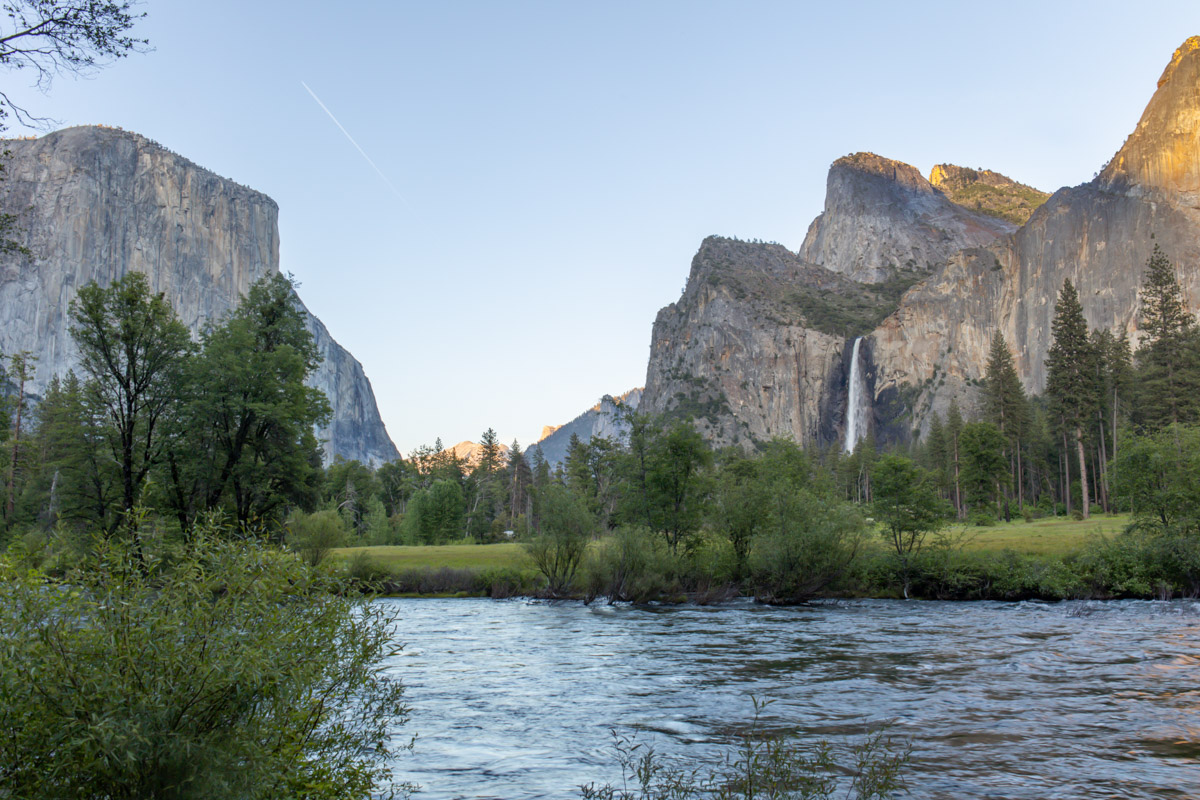
- WHERE IS YOSEMITE NATIONAL PARK
- HOW TO GET TO YOSEMITE
- PARKING AND SHUTTLE TIPS
- WHAT TO EXPECT WHEN YOU VISIT YOSEMITE
- HOW MANY DAYS DO YOU NEED TO EXPLORE YOSEMITE
- BEST TIME TO VISIT YOSEMITE
- WHERE DO I START WHEN VISITING YOSEMITE
- HOW CROWDED IS IT AT YOSEMITE
- HOW FAR IN ADVANCE DO I BOOK FOR YOSEMITE
- WHERE ARE THE MOST SCENIC PARTS OF YOSEMITE
- PHOTOGRAPHING YOSEMITE NATIONAL PARK
- HIKING TRAILS WITHIN YOSEMITE
- BEST PLACES TO STAY WITHIN YOSEMITE
- EVERYTHING YOU SHOULD KNOW BEFORE YOU VISIT YOSEMITE
- SUMMARY
WHERE IS YOSEMITE NATIONAL PARK
Yosemite National Park is located in California’s Sierra Nevada mountain range. It spans over 1,100 square miles, with the park’s landscapes ranging from sweeping meadows to ancient sequoia groves, granite cliffs and waterfalls.
The park’s is home to some famous landmarks too, including El Capitan, Half Dome, and Yosemite Falls. These are all must-sees for first-time visitors and situated within the heart of Yosemite Valley.
Yosemite is also located centrally within California which allows visitors to access the park from multiple points. The most common entry is through the Arch Rock Entrance on Highway 140, especially for visitors coming from the Bay Area or Sacramento. Other entry points include the Big Oak Flat Entrance and the South Entrance near Wawona. This is convenient for those, like us, who came from Southern California.
HOW TO GET TO YOSEMITE
Yosemite is reachable by car, bus, or shuttle, depending on where you’re starting your journey. From San Francisco, it’s about a four-hour drive, while it’s roughly three hours from Fresno.
If flying, your best options are Fresno Yosemite International Airport or San Francisco International Airport. Once you arrive, renting a car is highly recommended, as Yosemite’s size and spread make having a vehicle convenient to get around. We started our travels from Southern California. If this is also you, make sure to add Sequioa National Park onto your itinerary.
For those without a car, the YARTS (Yosemite Area Regional Transportation System) bus service is a reliable alternative. It connects surrounding cities to the park, making transportation easier for those who prefer not to drive. According to YARTS, the bus runs frequently during peak season, but schedules may be limited in winter. If this is your preferred option we would advise booking your bus ticket in advance, especially during the busy season.
If you’re entering by car, the park entrance fee is $35USD per vehicle, which is valid for seven days. Individual passes cost $20USD and are ideal for those using YARTS or shuttles. Even though this is a Yosemite Travel Guide for first timers, if you are exploring more national parks around the USA, it may be worthwhile investing in an America The Beautiful Pass. In the month that I travelled I visited many parks so it was most cost-effective option for my itinerary.
The America the Beautiful Pass costs $80USD and provides access to over 2,000 federal sites, including Yosemite. This is a great option for frequent travellers exploring multiple national parks. The other great thing about this pass is that it lasts for a year.
For a comparison on passes, click here.


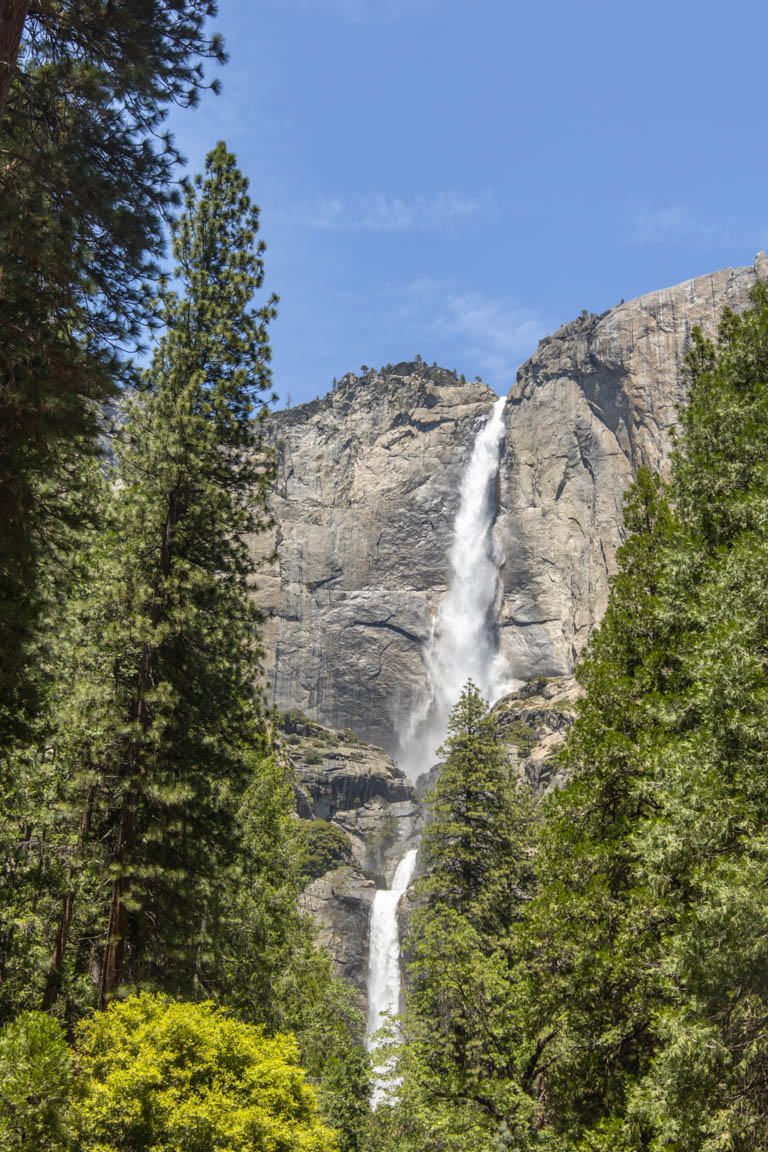
PARKING AND SHUTTLE TIPS
The Yosemite shuttle system is convenient for getting around the park, especially in the Valley. Parking can be challenging unless you arrive early as lots are often full by mid-morning.
This environmentally friendly transportation has regular stops along the loop road and runs frequently throughout the day. You’ll be able to get off at key spots such as Yosemite Village, trailheads and Curry Village. This means you can park your car in one of the larger lots, then rely on the shuttle to get around the valley without worrying about finding a park at each location.
I found that the combination of shuttle access and parking lots makes it easy to explore Yosemite Valley, even on busier days. Just make sure to arrive early and park somewhere convenient to the sights you’d like to see most.
WHAT TO EXPECT WHEN YOU VISIT YOSEMITE
Yosemite National Park is renowned for its jaw-dropping natural beauty, but first-time visitors may be surprised by the sheer scale and the variety of landscapes. Stretching over 1,100 square miles, most first-time visitors head straight to Yosemite Valley. This is a 7-mile long, 1-mile wide area that holds some of the park’s most iconic sights.
Yosemite Valley is framed by towering granite cliffs, El Capitan and Half Dome, which are popular with both photographers and rock climbers. You’ll also find Bridalveil Fall, one of Yosemite’s most recognisable waterfalls, with its mist creating rainbows on sunny days. Another must-see is Yosemite Falls, one of the tallest waterfalls in North America, cascading over 2,400 feet in three distinct sections. These landmarks are easily accessible by car or shuttle, making them perfect for first-timers wanting to see the park’s most famous features.
Despite the popularity of the valley, Yosemite’s vastness offers opportunities to explore quieter areas as well. Take a drive to Glacier Point for a panoramic view of the valley, including Half Dome and High Sierra peaks. We’d highly suggest a sunrise here. The quiet alongside the incredible views makes for a morning to remember. Alternatively, head to Tuolumne Meadows, a high-altitude area known for its alpine beauty and wildflowers.
For a first-time visitor, understanding the layout and size of Yosemite is key to making the most of your trip and ensures you see the best that the park has to offer. This, alongside giving yourself time to explore both the famous spots and the hidden gems, will make your Yosemite adventure unforgettable.

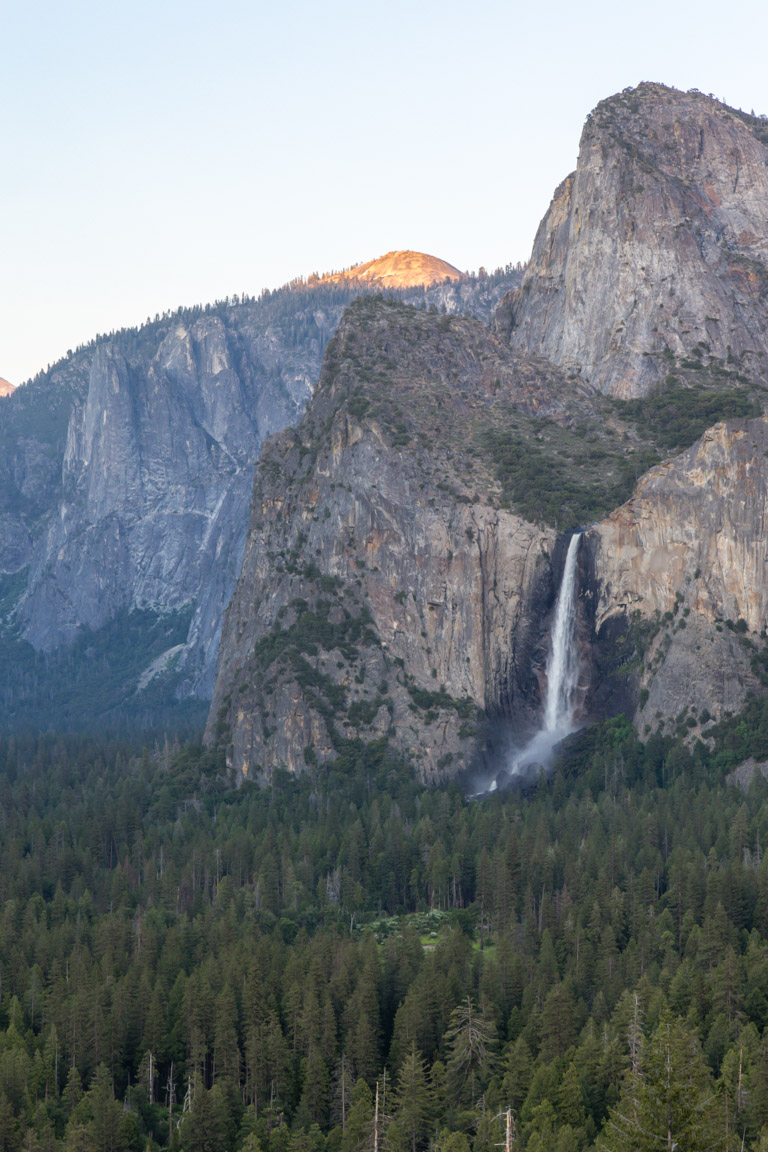

HOW MANY DAYS DO YOU NEED TO EXPLORE YOSEMITE
Yosemite can be explored in a couple of days or over a weekend. However, as this is a Yosemite Travel Guide for first timers we would be doing you a disservice in saying that this is enough time. To truly experience the park’s diverse landscapes and activities, we would say to plan your stay for at least four days. We explored Yosemite for this amount of time and managed to see and experience a lot. That said, we could have easily spent much more time there, too.
A four-day itinerary allows you to visit major sights like Yosemite Valley, Glacier Point, and Mariposa Grove without feeling rushed. It also gives you time to hike some of the best trails. Popular options include the Mist Trail to Vernal Falls or the Four-Mile Trail to Glacier Point.
If you do only have a small window of time, I would recommend early mornings. This will give you more time to explore and tick off as much as you can before the crowds. Yosemite Valley is also a must alongside Glacier Point.
BEST TIME TO VISIT YOSEMITE
Yosemite’s beauty changes with the seasons, making it a year-round destination. However, as a part of this Yosemite Travel Guide for First timers we would say the best time to visit largely depends on what you want to see and do. If you’re hoping to witness Yosemite’s waterfalls at their peak, plan your visit in late spring or early summer. Spring brings milder weather with the chance of occasional rain, especially early in the season. We visited towards the end of spring and were incredibly happy with blue bird days. Yosemite Falls and Bridalveil Fall were also particularly impressive during this time.
Alternatively, fall is an ideal time for hiking, with cooler temperatures and vibrant foliage. The crowds also thin out during the fall months, making it a great time to capture the landscape. During this time you can expect pleasant weather, with mostly sunny days, perfect for outdoor activities.
If you’re looking for a cooler experience, winter transforms Yosemite into a snowy wonderland. While it can be cold and wet, with snow falling at higher elevations and rain more common in the valley, the park is much quieter. Just keep in mind that Tioga Pass (Highway 120) and Glacier Point Road may be closed due to snow. Depending on the snowfall for the year these roads usually reopen by late May.
In terms of the time of day, the best time to visit Yosemite is either first thing in the morning when the light is soft and there are less crowds or in the evening for sunset. Sunset again, for the lighting, but you should expect it to be busier than sunrise. As you would guess the park starts to get busy around mid-morning.
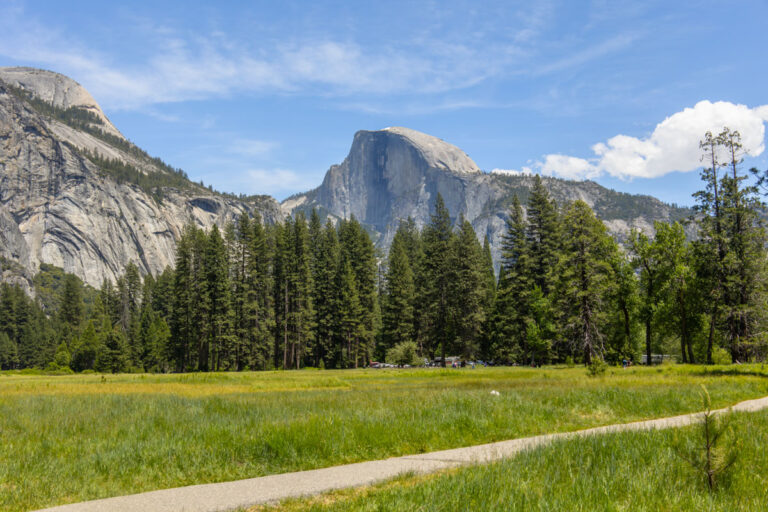
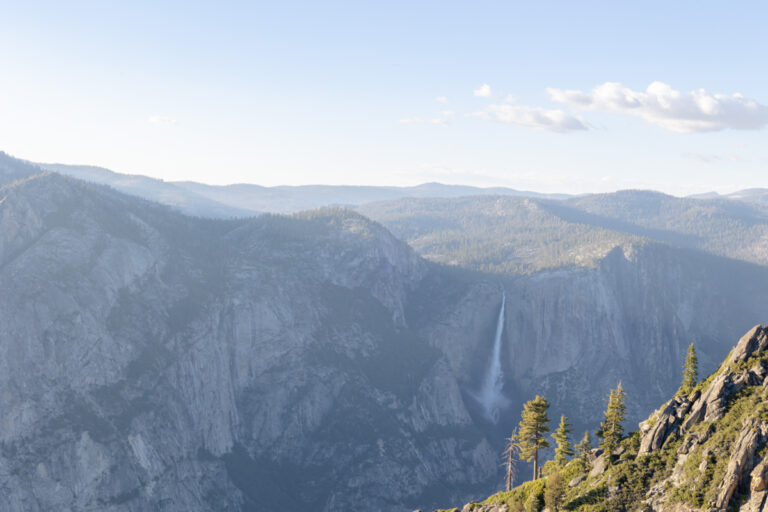
WHERE DO I START WHEN VISITING YOSEMITE
For first-time visitors, begin your journey in Yosemite Valley. This is the heart of the park and home to some of its most famous landmarks. As mentioned earlier the iconic sights, including El Capitan, Half Dome, and Yosemite Falls are all located here.
From the Valley, you can hike, bike, or take a shuttle to various points. The valley’s loop road, officially known as Yosemite Valley Loop Drive, provides convenient access to many of Yosemite’s iconic landmarks. This one-way road circles the valley, making it easy for first-time visitors to navigate the park. As it is a loop make sure you organise your itinerary effectively as otherwise you can spend more time driving than looking at the sights.
If you’re looking for a stunning view right from the start, Tunnel View is a must-see. It offers a panoramic look at El Capitan, Bridalveil Fall, and Half Dome all in one frame.
For more incredible views, Glacier Point is also a great place to start your Yosemite adventure. Accessible by car or hike, is another top spot for first-time visitors as it provides an unbeatable view of Yosemite Valley from above. According to the National Park Service, this viewpoint is open seasonally and provides some of the best photo opportunities in the park.
HOW CROWDED IS IT AT YOSEMITE
Yosemite is one of the most visited national parks in the U.S., drawing more than four million visitors annually. During peak season (late May through September), the park can be especially busy, with packed parking lots and crowded viewpoints. Yosemite Valley understandably sees the highest amount of visitors too.
If you prefer a quieter experience, consider visiting during the shoulder seasons in spring or fall. Both of these options offer fewer crowds and cooler weather. We visited towards the end of spring and we were lucky to have great weather and witness the Yosemite waterfalls fuelled by snowmelt. Even though it was still busy we found that arriving early in the morning and visiting mid-week helped reduce how crowded it felt.
Alternatively, if you can’t make it for spring, I’ve heard fall is equally beautiful with colourful foliage and nice hiking temperatures.
HOW FAR IN ADVANCE DO I BOOK FOR YOSEMITE
As a part of this Yosemite Travel Guide for first timers we would say that accommodation and permits can fill up quickly, so booking early is essential, especially during peak season. If you’re planning to stay inside the park, it’s best to reserve your lodging or campsite six months in advance.
For backcountry hikers, you’ll need a wilderness permit, which can be booked online. Yosemite’s wilderness permits are limited and highly sought after, so applying as early as possible is recommended. If you’re planning to hike Half Dome, you’ll also need a separate permit, which is awarded through a lottery system. According to the National Park Service, applications for the Half Dome lottery typically open in March, with results announced in April.
In terms of general entry into the park, you don’t need to book this in advance. However if you are visiting during peak season there is a lottery that you’ll need to apply for, for weekend visits. This is something you can avoid if you’re staying within the park which is definitely recommended.
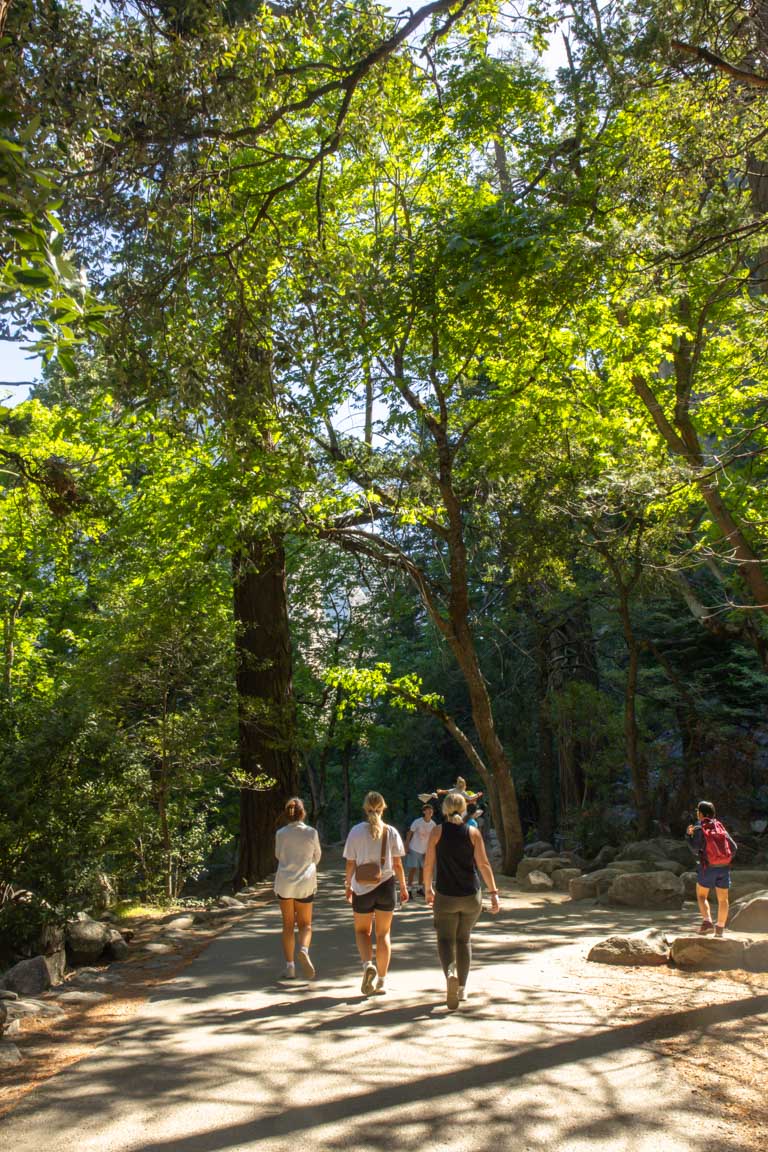


WHERE ARE THE MOST SCENIC PARTS OF YOSEMITE
Yosemite is known for its postcard-perfect views and famous for its scenic beauty, with no shortage of breathtaking spots. One of the most scenic parts of Yosemite is before you even enter the Valley. From Tunnel View you’ll have a sweeping vista of El Capitan, Bridalveil Fall, and Half Dome. We visited this spot multiple times but since Tunnel View can also be one of the busiest and most photographed spots in the park, especially during sunrise or sunset, we also hiked to Artist Point. This is a much less crowded option with an elevated view. And we had it all to ourselves which was the cherry on top.
Another part of the park that should be on your list as a first-timer that is particularly scenic is Glacier Point. Accessible by car or hike, this is a must-visit for panoramic views of Yosemite Valley and the surrounding mountains. Anywhere along Glacier Point Road is incredible. The Yosemite Conservancy highlights Taft Point, a less-crowded option with dramatic cliff-edge views.
Unfortunately we didn’t have enough time to explore Tuolumne Meadows but I’ve heard great things. Located along Tioga Road, you’ll see a different side of Yosemite with its alpine meadows, wildflowers, and peaceful streams. John Muir Trust suggests visiting these less-known areas to fully appreciate Yosemite’s diverse landscapes.
In all honesty, no matter where you go in Yosemite you’ll be treated to some of the most scenic views you would’ve ever seen. You really can’t go wrong.
PHOTOGRAPHING YOSEMITE NATIONAL PARK
Yosemite National Park is a paradise for photographs, offering diverse landscapes that change dramatically with the seasons. Whether you’re a seasoned photographer or just capturing memories on your phone, Yosemite provides endless opportunities for stunning images. Iconic locations such as Tunnel View, Glacier Point, and Valley View are must-visit spots for landscape photographers, especially during golden hour, sunrise and sunset.
El Capitan and Half Dome are popular subjects, offering impressive backdrops at any time of day. The park is particularly photogenic in spring when the waterfalls are at their peak and in fall when the valley is painted in autumn hues. If you’re visiting in winter, you’ll have the chance to photograph Yosemite’s snow-covered landscapes, which offer meadows and frozen waterfalls draped in white, a contrast against the dark granite cliffs.
Another prime photographic opportunity is the “Firefall”. It’s a natural phenomenon that occurs in late February when the setting sun hits Horsetail Fall at the perfect angle. This causes it to glow a fiery red. Thousands of photographers flock to Yosemite during this time for a chance to capture this rare sight. Planning your trip around this event requires some patience and luck, as conditions must be just right for the Firefall to occur.
Photographers of all levels can find inspiration throughout Yosemite, with endless possibilities for creative compositions and lighting. Whether you’re photographing landscapes or focusing on the small details, Yosemite’s natural beauty will leave you with images that last a lifetime.
In terms of the best times for photograph, this is definitely during golden hour, sunrise and sunset. This is when you can expect the soft light and for sunrise, a great time to avoid the crowds that you’ll often find at the more popular spots.
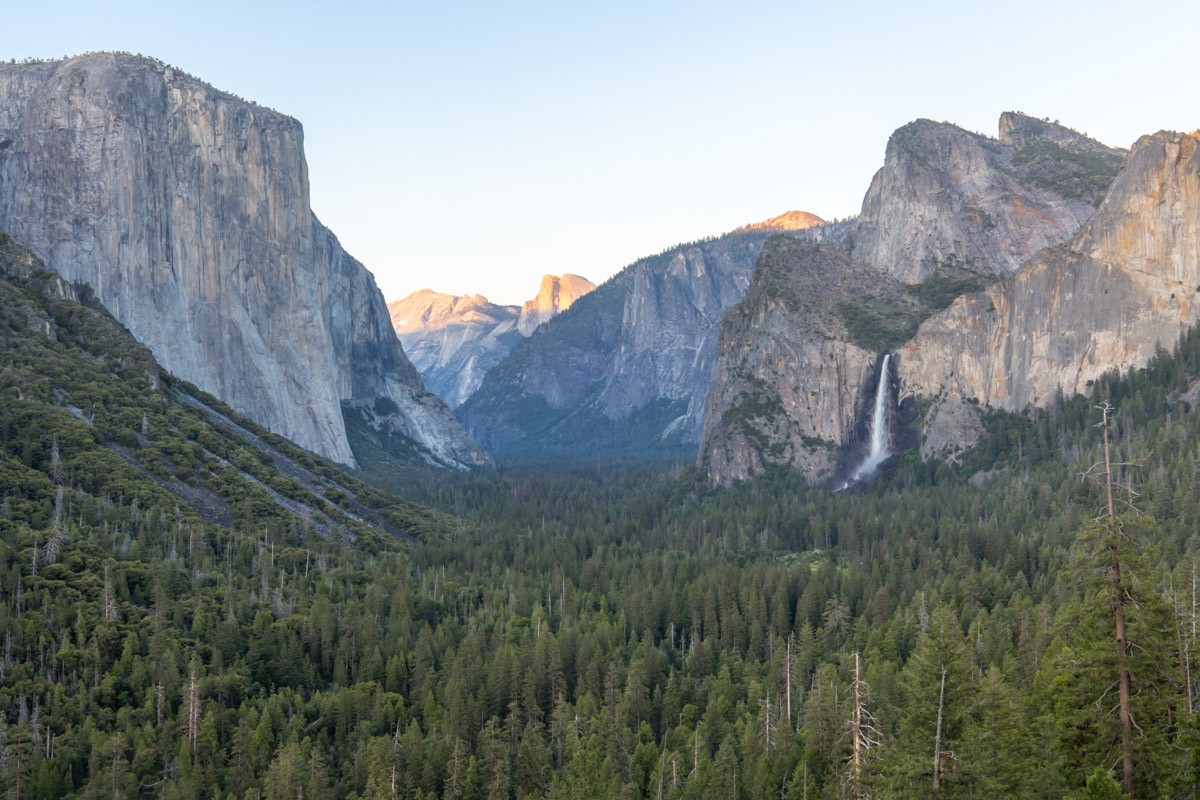
HIKING TRAILS WITHIN YOSEMITE
As a first time visitor to Yosemite National Park it’s nice to know that it’s home to a wide range of well-maintained trails that span over 800 miles. Suitable for every skill level, there are short, easy walks to strenuous hikes that reward you with breathtaking views.
As a part of this Yosemite Travel Guide for First timers it’s important to know that one of the reasons Yosemite’s trails are so well-kept is due to the efforts of the Yosemite park rangers and trail maintenance crews. These teams work year-round to preserve the trails, ensuring they are safe and accessible for visitors. The trails are also well-marked, with clear signage at key points to guide you along your journey. Whether you’re navigating the popular Mist Trail to Vernal Fall (one of my favourites in Yosemite) or exploring a quieter paths in Tuolumne Meadows, you can feel confident that the trails are easy to follow.
Additionally, many of the trailheads are located near shuttle stops or parking areas, making access to these hikes convenient for those visiting for the first time.
Yosemite’s trail network provides options ranging from gentle, family-friendly walks like the Lower Yosemite Fall Trail 1-mile loop to more intense hikes like Half Dome. Both of which have well-maintained paths and stunning scenery. No matter your skill level, you’ll find a trail that suits your pace and offers unforgettable experiences. Just make sure to check trail conditions before heading out. The weather in Yosemite can change unexpectedly so it’s best to be prepared.
BEST PLACES TO STAY WITHIN YOSEMITE
When planning your stay as a first timer in Yosemite, you have several options, both inside and outside the park. Inside the park, you’ll find everything from basic campgrounds to luxurious accommodations. Staying inside the park offers convenience and proximity to major attractions. The Ahwahnee Hotel offers a high-end experience with stunning views and a historic atmosphere, while Curry Village provides more budget-friendly options like cabins and tent cabins.
If you prefer to stay outside the park, towns like Yosemite West, Wawona and Oakhurst offer a range of hotels and vacation rentals. These areas are just a short drive from the park’s entrances and often have more availability than the accommodations within the park. According to Booking.com, these accommodations fill quickly, so it’s best to reserve early.
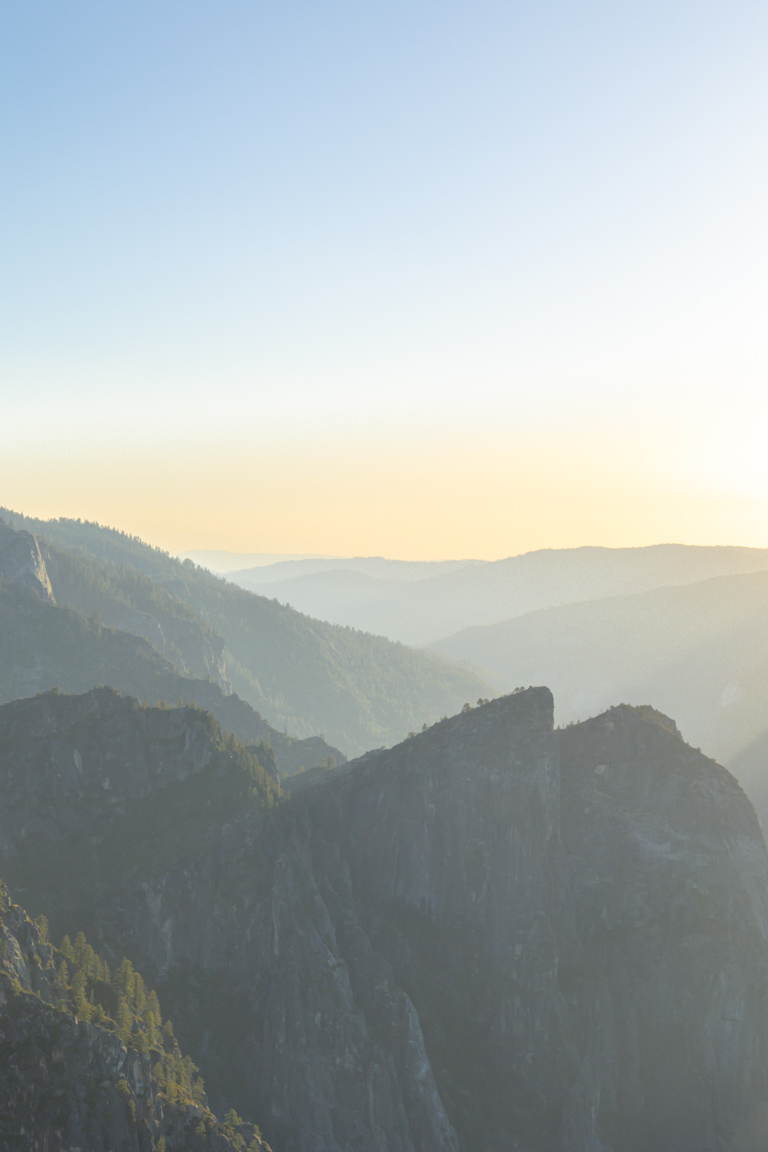
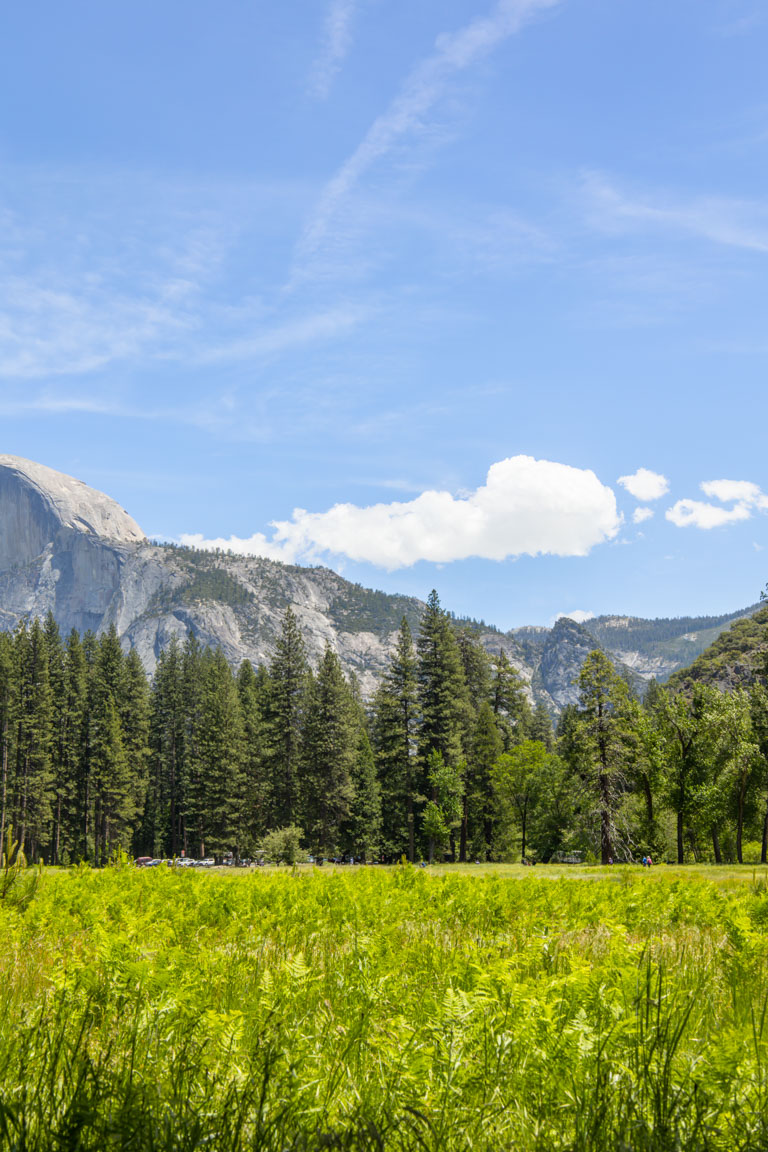
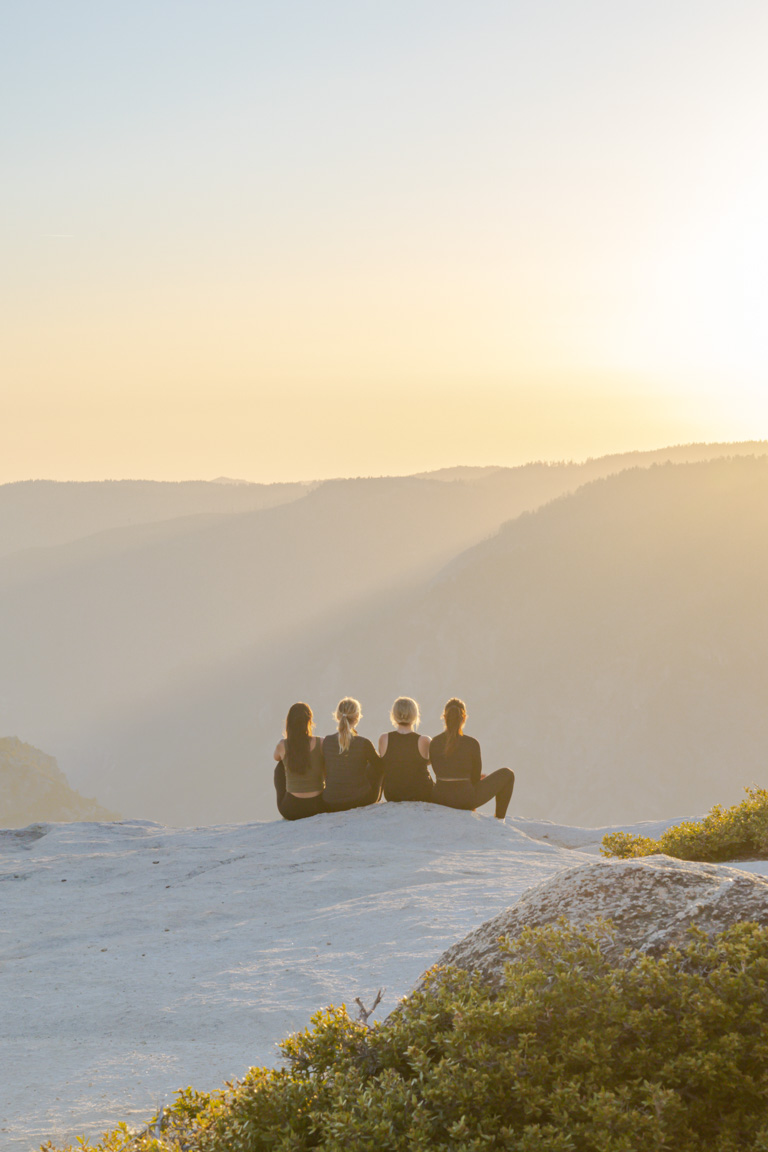
EVERYTHING YOU SHOULD KNOW BEFORE YOU VISIT YOSEMITE
- Yosemite National Park is located in California’s Sierra Nevada, covering over 1,100 square miles of diverse landscapes including granite cliffs, waterfalls, and ancient sequoia groves.
- Key attractions include El Capitan, Half Dome, and Yosemite Falls, all located within the iconic Yosemite Valley.
- Yosemite is accessible by car, bus, or shuttle. The closest airports are Fresno Yosemite International and San Francisco International.
- Entry costs $35USD per vehicle (valid for seven days) or $20USD per individual if using buses or shuttles. The America the Beautiful Pass, costing $80USD, grants access to Yosemite and over 2,000 other federal sites for a year.
- Yosemite’s shuttle system is convenient for getting around the Valley. Arrive early to secure a spot and use the shuttle to explore key locations.
- To fully experience Yosemite, plan to stay for at least four days. This allows time to visit major sights and hike popular trails without feeling rushed.
- Spring and early summer offer impressive waterfalls, while fall provides cooler weather and colourful foliage. Winter is quieter but some roads may be closed due to snow.
- Yosemite is extremely popular, especially from late May to September. Visiting during the shoulder seasons (spring or fall) or arriving early in the morning helps avoid crowds.
- Must-see viewpoints include Tunnel View, Glacier Point, and Yosemite Valley. Lesser-known but scenic areas include Tuolumne Meadows and Artist Point.
- Yosemite has over 800 miles of trails, from short walks like Lower Yosemite Fall (1-mile loop) to challenging hikes like Half Dome.
- For the best lighting, photograph during golden hour, sunrise, or sunset.
- Accommodations inside the park range from campgrounds to luxury lodges. Outside the park, nearby towns offer more options but book early as spots fill up quickly.
- Accommodations and permits, especially for backcountry hikes, fill up fast. Plan months in advance for lodging, and apply early for wilderness permits or the Half Dome lottery.
- Yosemite’s weather can be unpredictable. Check trail conditions and be prepared for sudden changes, especially in higher elevations or during winter.
- While Yosemite Valley is the most popular, exploring quieter areas like Glacier Point at sunrise or Tuolumne Meadows offers a more peaceful experience with fewer crowds.
- Make sure to read this Yosemite Travel Guide for First timers in full for everything you need to know.
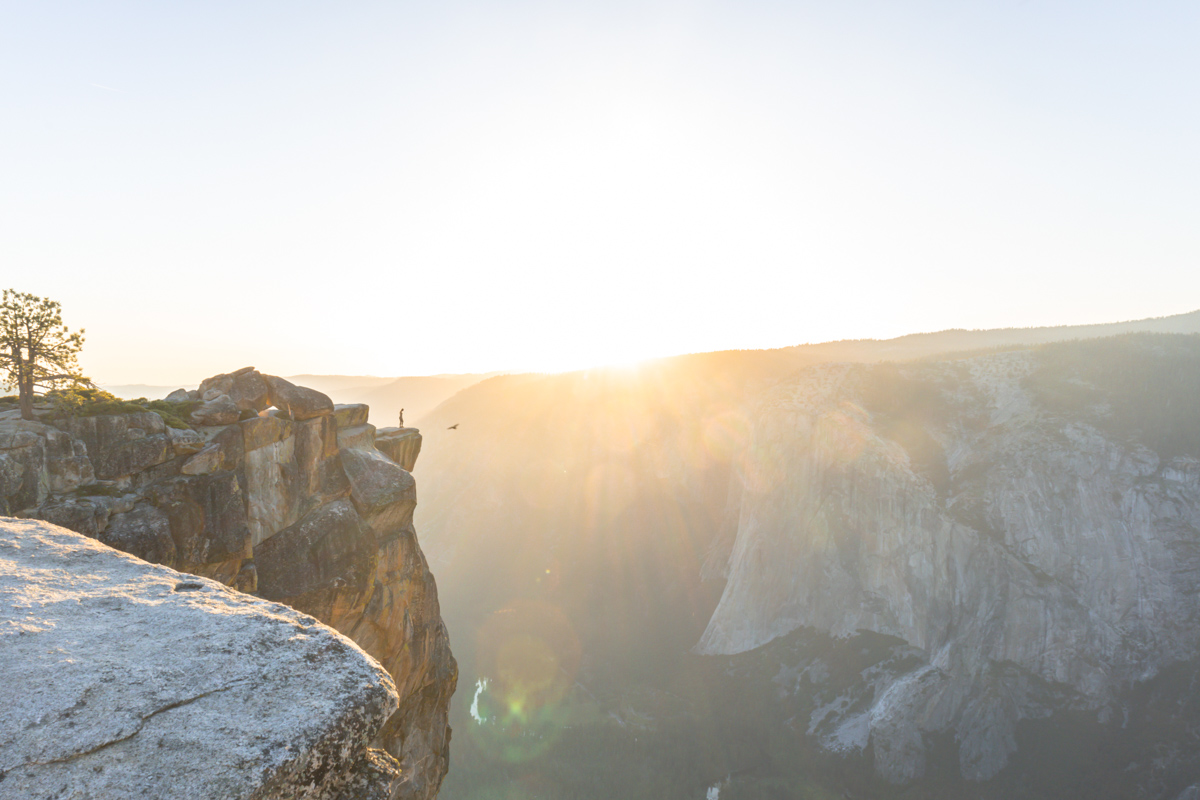
SUMMARY
In this post, we’ve covered everything you need to know for a successful visit to Yosemite National Park. From the park’s stunning landscapes and iconic landmarks to the best times to visit and tips for avoiding crowds, planning ahead is key to making the most of your trip. Whether you’re hiking to waterfalls, taking in panoramic views, or exploring quieter areas, Yosemite offers something for everyone. Hopefully with the help of this Yosemite Travel Guide for First timers and some thoughtful preparation, your visit to this remarkable destination will be an unforgettable experience.
For more tips and insights, check out our comprehensive travel guides to top destinations around the world.